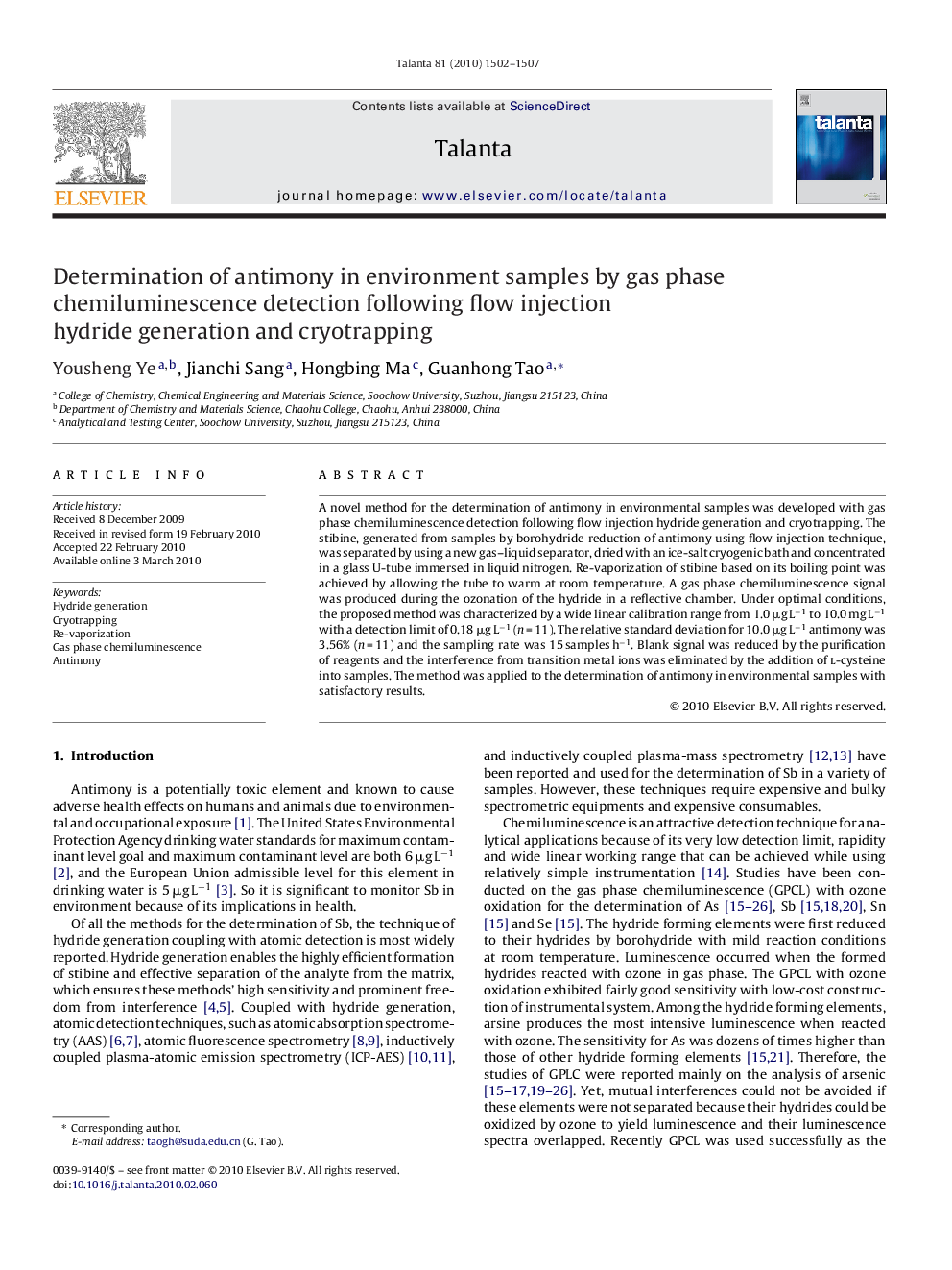| Article ID | Journal | Published Year | Pages | File Type |
|---|---|---|---|---|
| 1242661 | Talanta | 2010 | 6 Pages |
A novel method for the determination of antimony in environmental samples was developed with gas phase chemiluminescence detection following flow injection hydride generation and cryotrapping. The stibine, generated from samples by borohydride reduction of antimony using flow injection technique, was separated by using a new gas–liquid separator, dried with an ice-salt cryogenic bath and concentrated in a glass U-tube immersed in liquid nitrogen. Re-vaporization of stibine based on its boiling point was achieved by allowing the tube to warm at room temperature. A gas phase chemiluminescence signal was produced during the ozonation of the hydride in a reflective chamber. Under optimal conditions, the proposed method was characterized by a wide linear calibration range from 1.0 μg L−1 to 10.0 mg L−1 with a detection limit of 0.18 μg L−1 (n = 11). The relative standard deviation for 10.0 μg L−1 antimony was 3.56% (n = 11) and the sampling rate was 15 samples h−1. Blank signal was reduced by the purification of reagents and the interference from transition metal ions was eliminated by the addition of l-cysteine into samples. The method was applied to the determination of antimony in environmental samples with satisfactory results.
